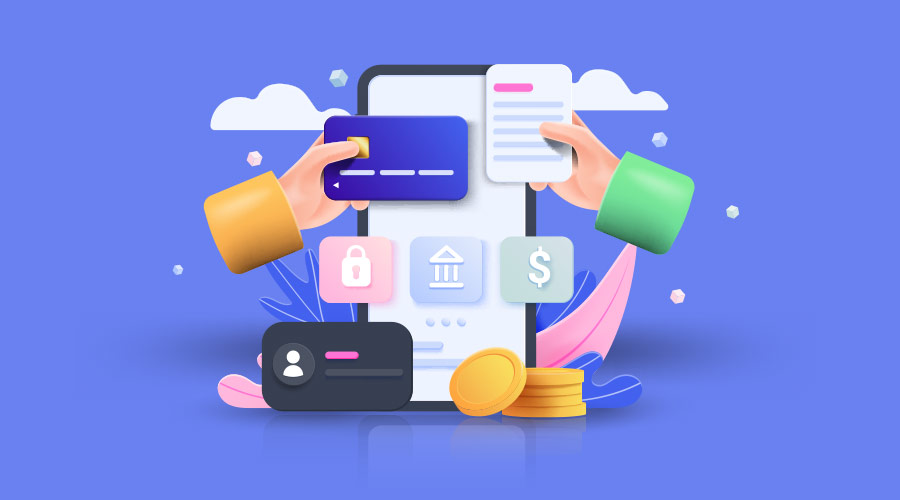Modern business is changing the way B2B Commercial Payments are made. We have seen a significant shift toward companies adopting digital payments. Customers are demanding a frictionless experience. Businesses are too busy to investigate, let alone adopt automation in their accounting functions, so they suffer from a long collection process with little extra cash on hand. An unintended consequence is providing customers with generous terms and payments over time while the merchant waits for their money.
Understanding those challenges associated with managing payments from clients can help you choose a system that works for your business. Key performance measures include reducing payment delays and risk affecting business-to-business [B2B] sales operations.
Order-to-Cash in operations is about your company’s agility to turn around a customer’s order into payments. Since the payments industry is increasingly complex, cash flow and collecting your receivables can become a challenge for many businesses
B2B payments are commonly used for commercial and institutional customers, often accompanied by a purchase order and future invoicing. Credit terms and credit limits may be set for your preferred customers, often with a small discount for prompt payment. B2B payments are generally made once the goods are delivered or services provided. Billing is done in arrears and is often used for recurring purchases.
COMMON B2B PAYMENT METHODS
There are several common methods for B2B Commercial Payments. Offering them makes it easier for your customers, especially while you are trying to grow your business. There is always a “cost of money,” and the issue of the float is associated with any method of payment, and offering options is a best practice. Among those we are most familiar:
Checks: Commercial checks still make up nearly 40% of all B2B transactions; however, these payments, while convenient, are combined with customer inefficiencies. Delays occur due to internal process obstacles in Accounts Payable and result in “slow-pay.” As check writing is a manual process, some companies purposely delay payments to maximize their cash flow.
ACH Transfers: electronic payments are an option that transfers funds directly from customer to supplier through each parties’ financial institution. These payments are often issued in just a few days, once authorized, and are secure. Be mindful ACH is also a manual process prone to mistakes and delays.
Credit and Debit Cards: Most enterprises have a business-only credit card for expenses. Many also have Payment Cards for completing B2B purchases. This is a simple way to track payments, particularly for recurring transactions. B2B payment card transactions carry a discount fee to the merchant like retail and consumer payments.
If not managed, commercial payments can be costly as they carry a higher interchange rate due to risk. The risk of non-payment to the bank issuer is often offset by a corporate guarantee, but still, there is the risk of fraud. Often these purchases are made as card-notpresent, and fraud risk can increase by larger transaction values. These risks can be mitigated and costs reduced by providing Level II and Level III information.
LEVEL II AND LEVEL III PROGRAMS
To promote B2B transactions, lessen risk exposures, and reduce the overall cost of accepting payment cards, merchants may take advantage of Level II and Level III interchange pricing. In most cases, your payment processor can provide a means to reduce the cost of accepting cards by collecting some additional information at the time of payment. This makes accepting credit cards for commercial payments an attractive option for merchants.
It is more than asking, “what’s your rate?” Merchants may qualify for lower commercial rates and encourage customers to pay by credit and payment cards. Level II and Level III interchange pricing by your merchant processor may help you accelerate invoice payments, give you payment certainty and reduce the cost associated with delays by their customers.
Using a systems gateway, the merchant provides key data such as a commodity code or the part/product number, per-unit pricing, and sales tax. Additionally, knowing the purchase order, customer address, and invoice number create a level of transaction intimacy that reduces the risk of fraud.
Knowing your customers’ preferences and understanding B2B Payments can improve your balance sheet. The discount fee and interchange rate for your transactions can be significantly reduced by qualifying for Level II or Level III pricing. Given a choice, most customers will prefer to pay their invoices electronically. This can be accommodated through a virtual terminal, integrated payment pages, and email invoicing.
With top-down transparency, a merchant can identify customers who pay on time and those who are slow-pay. Commercial Payments can make a difference






















